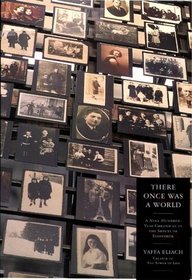Search -
There Once Was a World: A 900-Year Chronicle of the Shtetl of Eishyshok
There Once Was a World A 900Year Chronicle of the Shtetl of Eishyshok
Author:
"In the soaring, three-story space that is the Tower of Life at the United States Holocaust Memorial Museum in Washington, D.C., sixteen hundred photographs collected by the historian Yaffa Eliach give face to a murdered people. In There Once Was a World, Eliach brilliantly and movingly records the history of that people. Nineteen years of scho... more »
Author:
"In the soaring, three-story space that is the Tower of Life at the United States Holocaust Memorial Museum in Washington, D.C., sixteen hundred photographs collected by the historian Yaffa Eliach give face to a murdered people. In There Once Was a World, Eliach brilliantly and movingly records the history of that people. Nineteen years of scho... more »
ISBN-13: 9780316232524
ISBN-10: 0316232521
Publication Date: 10/1998
Pages: 818
Rating: ?
ISBN-10: 0316232521
Publication Date: 10/1998
Pages: 818
Rating: ?
0 stars, based on 0 rating
Publisher: Little Brown Co (T)
Book Type: Hardcover
Other Versions: Paperback
Members Wishing: 0
Reviews: Amazon | Write a Review
Book Type: Hardcover
Other Versions: Paperback
Members Wishing: 0
Reviews: Amazon | Write a Review
Genres:




